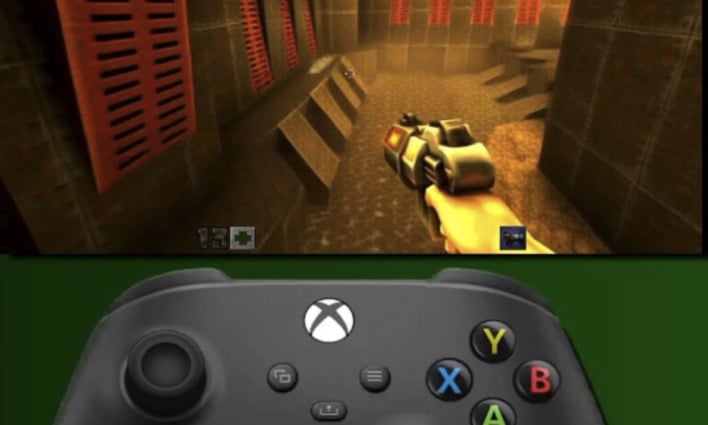Oh WHAMM, Microsoft Shows Off Gen AI-Built Classic Quake II Shooter
The research team working on the project was actully able to create a working demo of the classic first-person shooter, Quake II. The original WHAM was trained using a copious amount of gameplay data from Bleeding Edge. However, WHAMM got up and running in Quake II with only 1 week worth of data “through more intentional data collection and curation.”
One of the biggest improvements made by WHAMM is the speed of generation. This updated model is capable of producing ten images a second, which is a big jump from WHAM’s one image a second. It’s thanks to this improvement that WHAMM can generate real time video. Moreover, the resolution of the output was doubled, going from 300x180 to 640x360 by making modifications to the underlying encoder and decoder.

Despite the improvements, Microsoft still cautions that there are several limitations. For example, enemy interactions can be “incorrect,” as oftentimes the model struggles with damage being dealt between the player and enemies. It’s a pretty big drawback as this is a key part of the gaming experience in Quake II. Additionally, the model can forget about objects that are no longer within view after one second of gameplay, which the company is pitching as “a source of fun.”
It's quizzical that Microsoft decided to release this as a playable demo now, for anyone to try, especially with a game as revered by Quake II. As interesting as it is, in its current state the demo shows just how early and rough around the edges this technology is. This would perhaps have been better as a technical presentation at the Game Developer’s Conference (GDC), at least until the user experience was a bit better.

